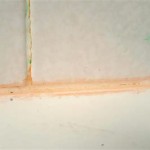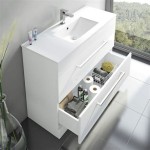Bathroom Bowl Sink Ideas: A Comprehensive Guide
Bathroom bowl sinks, also known as vessel sinks, have become increasingly popular in contemporary bathroom design. Their distinctive aesthetic and versatility offer a wide range of design possibilities, allowing homeowners to create unique and stylish spaces. This article provides a comprehensive overview of bathroom bowl sink ideas, covering various styles, materials, installation considerations, and design tips to help in making informed decisions for a bathroom remodeling project.
Types of Bathroom Bowl Sinks
Bathroom bowl sinks are available in a diverse array of shapes, sizes, and styles, enabling customization to fit various bathroom aesthetics. Understanding the different types of bowl sinks is crucial for selecting the most suitable option for specific needs and preferences. Here are some common types:
Round Bowl Sinks: These sinks feature a circular shape, offering a classic and versatile look. They are suitable for various bathroom styles, from traditional to modern, and can be easily integrated into different countertop designs. Round bowl sinks are often favored for their simplicity and ease of cleaning.
Square Bowl Sinks: Square bowl sinks provide a more contemporary and geometric aesthetic. Their clean lines and sharp angles make them ideal for modern and minimalist bathrooms. They can create a striking focal point and add a touch of sophistication to the space.
Rectangular Bowl Sinks: Rectangular bowl sinks combine the clean lines of square sinks with a slightly elongated shape. This offers a balance between modern design and functionality, providing ample space for washing. They work well in both small and large bathrooms.
Oval Bowl Sinks: Oval bowl sinks offer a softer and more organic look compared to round or square sinks. Their gentle curves add a touch of elegance and sophistication to the bathroom. They are a versatile choice that can complement various design styles.
Irregular Shaped Bowl Sinks: For those seeking a truly unique and artistic statement, irregular shaped bowl sinks are an excellent option. These sinks come in various unconventional shapes, such as asymmetrical designs or natural forms, adding a sculptural element to the bathroom. They are perfect for creating a personalized and eye-catching space.
Above-Counter Bowl Sinks: This is the most common type of installation. The entire bowl sits above the countertop, making it a prominent feature in the bathroom. This type allows for a wide variety of bowl designs and materials to be used.
Semi-Recessed Bowl Sinks: These sinks are partially recessed into the countertop, with a portion of the bowl remaining visible above the surface. This offers a compromise between the visual impact of an above-counter sink and the practicality of a recessed sink.
Materials and Finishes for Bathroom Bowl Sinks
The material and finish of a bathroom bowl sink play a significant role in its overall appearance, durability, and maintenance requirements. Selecting the right material is essential for achieving the desired aesthetic and ensuring the longevity of the sink. Here are some popular materials used for bathroom bowl sinks:
Ceramic/Porcelain: Ceramic and porcelain are the most common materials for bathroom sinks due to their durability, affordability, and ease of cleaning. They are resistant to stains, scratches, and heat, making them a practical choice for everyday use. Ceramic and porcelain sinks are available in a wide range of colors and finishes, allowing for versatile design options.
Glass: Glass bowl sinks offer a sleek and modern aesthetic, adding a touch of elegance to the bathroom. They are available in various colors, textures, and thicknesses, allowing for customization. Glass sinks are relatively easy to clean, but they may be more susceptible to scratches and chips compared to ceramic or porcelain.
Stone: Stone bowl sinks, such as granite, marble, or travertine, provide a luxurious and natural look. They offer unique variations in color and veining, making each sink one-of-a-kind. Stone sinks are durable and resistant to heat, but they may require special cleaning and sealing to prevent staining.
Metal: Metal bowl sinks, such as stainless steel, copper, or bronze, offer a contemporary and industrial aesthetic. Stainless steel sinks are durable, hygienic, and easy to clean, while copper and bronze sinks develop a unique patina over time, adding character to the bathroom. Metal sinks can be prone to scratches and dents if not properly cared for.
Concrete: Concrete bowl sinks offer a modern and minimalist aesthetic. They are durable and can be customized in various colors and textures. Concrete sinks require sealing to prevent staining and water damage. They offer a unique and industrial flair to the bathroom.
Resin/Acrylic: Resin and acrylic bowl sinks are lightweight, durable, and resistant to stains and scratches. They are available in various colors and shapes, offering design flexibility. Resin and acrylic sinks are often used in modern and contemporary bathrooms.
The finish of the sink can also significantly impact its appearance. Common finishes include glossy, matte, and textured options. Glossy finishes offer a sleek and reflective surface, while matte finishes provide a more subtle and understated look. Textured finishes add visual interest and tactile appeal.
Installation Considerations and Design Tips
Proper installation of a bathroom bowl sink is crucial for its functionality and longevity. This section outlines important considerations and design tips for installing and incorporating bowl sinks into bathroom designs.
Countertop Height: The height of the countertop should be carefully considered to ensure comfortable use of the bowl sink. Since bowl sinks sit above the countertop, the countertop height should be lower than standard to avoid the sink being too high. A comfortable countertop height is typically between 30 and 36 inches, but this can be adjusted based on individual preferences.
Faucet Selection: The faucet selection is crucial for both functionality and aesthetics. Tall vessel faucets are designed specifically for bowl sinks, providing adequate clearance and reach. Wall-mounted faucets are another option, offering a clean and modern look. The faucet finish should complement the sink material and the overall bathroom design.
Drain Placement: The drain placement should be considered to ensure proper drainage and prevent water from pooling in the sink. A pop-up drain or a grid drain are common choices for bowl sinks. Ensure the drain is compatible with the sink and faucet.
Countertop Material: The countertop material should be durable, water-resistant, and aesthetically pleasing. Popular options include granite, marble, quartz, and solid surface materials. The countertop color and pattern should complement the sink and the overall bathroom design.
Storage Solutions: Bowl sinks often require custom storage solutions to maximize space and organization. Vanities with open shelving or drawers can provide ample storage for toiletries and other bathroom essentials. Consider adding a decorative basket or tray to the countertop to keep frequently used items within reach.
Lighting Design: Proper lighting is essential for highlighting the beauty of the bowl sink and creating a functional and inviting space. Consider adding recessed lighting, pendant lights, or sconces to illuminate the sink area. A well-lit sink area enhances visibility and functionality.
Mirror Selection: The mirror selection should complement the bowl sink and the overall bathroom design. A large mirror can create the illusion of more space, while a decorative mirror can add a touch of personality. Consider adding a backlit mirror for enhanced lighting and a modern look.
Color Palette: The color palette should be cohesive and harmonious. Neutral colors, such as white, gray, and beige, can create a calming and serene atmosphere. Accents of color can be added through accessories, such as towels, rugs, and artwork. The color palette should complement the sink material and the overall bathroom design.
Accessibility Considerations: When designing a bathroom with a bowl sink, it is important to consider accessibility for all users. Ensure the countertop height and sink placement are accessible for individuals with mobility limitations. Consider adding grab bars or other assistive devices as needed.
Maintenance and Cleaning: Regular maintenance and cleaning are essential for keeping a bathroom bowl sink looking its best. Clean the sink with a mild detergent and a soft cloth. Avoid using abrasive cleaners or harsh chemicals, as they can damage the sink's surface. Rinse the sink thoroughly after cleaning and dry it with a clean towel.

Pros And Cons Of Vessel Sinks Small Bathroom Vanities Interior

Trendy Bowl Bathroom Sink Designs Inspiration And Ideas From Maison Valentina Design Bowls Small Sinks
;?strip=all)
Bathroom Transformations Trends Stylish Vessel Sinks Granite Blog

Are Vessel Sinks Still In Style The Lived Look

16 Amazing Ideas For Countertop Bathroom Basins Basin

Top 20 Bathroom Vanities With Vessel Sinks Ideas For 2024 Badeloft

The Right Vessel Sink Can Create Perfect Contemporary Bathroom Beautiful Homes

Timeless Vessel Sink Designs That Can Reinvent Your Bathroom

Vessel Sinks

Vessel Sinks A Complete Guide Roomhints
Related Posts







